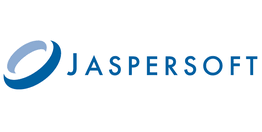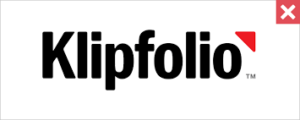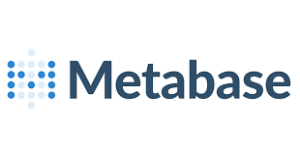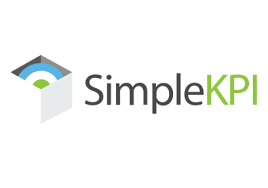BI & Reporting Tools – Market Guide
As ITAM teams grow in seniority it becomes increasingly important to focus on the quality and frequency of management reporting. This Market Guide explores tools to help you meet these goals.
The need for Management Reporting
Driving greater value from information technology continues to be a focus for companies. Alongside this comes the need to ensure the technology used to generate business value is secure. These twin aims rely on some of the outputs an ITAM team can provide – accurate asset inventory, dependency mapping, financial forecasts, and investment planning. Providing management reporting about your IT estate is so much more than just about tracking inventory completeness or other internally focused ITAM measures. Aligning your reporting with business outcomes can do a great deal to elevate the standing of your ITAM practice.
The Language of Reporting
Reporting is a means of communication, and in communication, the language used matters. Before we start to think about what we may need to help us provide effective Management Reports, it’s useful to define some terminology.
Let’s look at some of the jargon around reporting.
Metrics vs Key Performance Indicators
I feel that this is a commonly misused and misunderstood pair of terms. By understanding what they mean we can immediately start to filter what we should be including in our management reports.
A metric is a simple measure, a statistic. If you can assign a number to something, it can be a metric.
A Key Performance Indicator (KPI) is a measurement of effectiveness against a goal over time. In the case of a business this is best derived from an organisational, departmental, or personal objective. Because KPIs are a measurement, they are also a metric.
Metrics & KPIs in ITAM
In the ITAM world metrics are everywhere. At the foundational level ITAM is all about numbers – how many assets do we have, how many copies of Office are installed, how much memory is installed in a particular laptop. Every asset will have many, many metrics. Are those metrics useful to your stakeholders? Not of themselves, no. These metrics can be used to track internal activity and build workstreams but they’re unlikely to play a big role in delivering your objectives.
However, bundled together they can be used to track performance against an objective and that’s what a KPI does. So, all KPIs are made up of one or more metrics, but not all metrics are necessarily a KPI. For example, a KPI for an ITAM team might be Software Utilisation percentage, measuring the monthly performance against a cost management objective.
By focusing on KPIs linked to an objective, an ITAM team can begin to leverage its data-gathering capabilities to drive improved business performance. Your external stakeholders won’t necessarily be interested in classic ITAM metrics such as percentage of inventoried devices, but they will be interested in those aligned with a business objective.
Dashboards
Dashboards are a visual representation of information, designed to provide an overview of an area of interest. Many ITAM tools include dashboards that are pre-built or end-user configurable. Recent years have seen the growth of Dashboard platforms designed to ingest data from almost any source and visualise it in dashboard form. As with most other software categories growth has been driven by the ease of deployment enabled by SaaS. Key capabilities for dashboards include flexibility in data sources and connectivity, the ability to provide repeatable results, and providing role-based access to data, e.g. providing C-Suite and Operations views of the same underlying data sources.
Business Intelligence & Analytics
Business Intelligence (BI) is an entire management discipline in the same way that accounting or corporate law is. Put simply, its purpose is to use facts to improve decision making. That should sound familiar to anyone versed in ITAM – for ITAM teams gather facts through discovery, inventory, and normalisation activities and take action on those facts in optimising their managed estates. Reporting is a deliverable for BI systems and platforms. Over the last 20 years BI platforms have grown from niche use cases to being relied upon by business in the same way as they rely on their ERP systems. Like ERP systems, they tend to be amongst the most expensive and complex software investments a company makes.
Data Warehouse
A Data Warehouse is, as the name suggests, a central store for business data. Its purpose is to collect, normalise, and store data from disparate systems and make that available for users and systems creating reports. For ITAM teams, Data Warehouses have potential to overcome issues relating to access to data from sensitive systems and to therefore improve reporting and decision-making. For example, your Data Warehouse may contain employee data that could be useful for Cost Management objectives. Critically, Data Warehouses are read-only and persistent meaning that reports can be automated and provide reproducible results. There is considerable opportunity for enriching the quality of ITAM reports by using a Data Warehouse as a source.
Capabilities required for effective ITAM Reporting
Now we understand a little more of the jargon surrounding reporting, what do we need to improve the quality of our reporting? What we need to do is to focus on the entire process of producing reports – required skills, data gathering, normalisation, analysis, and presentation.
Skills Required
Before looking at tool capabilities it’s important to note that Reporting toolsets are, by and large, designed for people with strong technical backgrounds. You will need to be comfortable with installing and configuring toolsets and/or understand how to connect to data sources. You may also need some programming or scripting knowledge, and also have strong analytical skills. Having the data is one thing, knowing how to tie it together in a meaningful and useful report is another challenge. For this you will also need visual and layout skills to produce reports that have impact and are understandable to your audience.
If this sounds daunting remember that larger organisations may well have these skills in house and, if that is the case, engaging with those teams is important too. You may find that your first and most effective step is to simply make your BI or Data Warehouse team know that you have a rich store of data available in your ITAM tooling and ask them to help produce reports for you.
Data Gathering
For ITAM teams, the more data sources we have, the better our understanding of our environment will be. Our dedicated ITAM tools use a range of methods to acquire data but inevitably there will gaps in inventory and discovery. Many tools acknowledge this by providing connectors to other data sources such as Active Directory & SCCM. An effective ITAM reporting toolset will therefore be able to ingest data from multiple sources, including your existing ITAM tools. Unfortunately, this is one area where many ITAM tools lag behind modern software tools – they tend to lack Application Programming Interface (API) connectivity. This means that you may end up exporting data via CSV or spreadsheet, or potentially directly querying their underlying database. Neither is ideal and it’s an area I’d like to see tool providers improve. With this in mind, all tools in this guide have the ability to import data via direct database connection or CSV files.
Normalisation
Most ITAM tools provide normalisation capabilities but external tools can also help here. As we’ve seen above, Data Warehouse technology can help with both Data Gathering & Normalisation. However, Data Warehouses tend to be an enterprise-level technology, and not something that an ITAM team would specify and build on their own. In time, if you want to improve data quality, the list of tools in this guide includes some applications with Data Warehousing capabilities.
Analysis
Once we’ve normalised our disparate data sources, we need to analyse that data. Once again, our ITAM toolsets provide this capability and this is often a clear differentiator between tools. For example, analysis of complex SQL estates is by no means available in every full-lifecycle ITAM toolset. Clearly, you are limited to the functionality and logic provided by your ITAM tools so there may be value in looking elsewhere to enhance your reporting capability.
Presentation
A reporting presentation layer needs to provide consistent, accurate, repeatable reports to stakeholders. It should present reports with regard to differing audiences. A CIO requires a different level of detail to a server team leader. Dashboards and rich, graphical reports with drill-down capabilities are desirable.
Vendor & Tool selection
As you may have gathered by now, Reporting is a very broad tool landscape. As such, this Market Guide only seeks to provide a representative selection of tools. The selection pays particular attention to tools that are easy to deploy and use and designed for people who aren’t data and reporting professionals. Included are a mix of commercial and free tools.
Tools
BIRT

BIRT is a free open source tool used to create data visualisations and reports. It is licensed under the Eclipse Public License and is maintained by an active community supported by IBM & commercial BI provider Actuate. This is a powerful tool suitable for users with a technical/developer background.
Chartio
Chartio is commercial dashboarding software. It aims to enable creation of powerful dashboards by end users. It is available as a hosted SaaS product and pricing starts at $40 per user per month. Your data is stored in the public cloud but Chartio are certified for SOC2 Type II & HIPAA compliance, which sets a high bar for data security. Chartio’s key differentiator is that it enables end users to build dashboards and insights using drag and drop.
Databox

Databox is commercial dashboarding software, delivered as SaaS, and priced at $100 per month. A free tier is also offered but this lacks the necessary connectivity and integration for it to be useful for an ITAM team. Built, as many of these tools are, with marketing and web analytics in mind it is easily extensible to cover our use case. Databox benefits from a community-built reports library and offers drag-and-drop custom dashboard building. Each KPI reported can be visualised in multiple ways – tables, graphs, counters, and gauges.
Datapine
![]()
Datapine differentiates from some other tools in this guide by offering pre-built, industry and function-specific dashboards – over 80 in total. Datapine also sell services alongside the tool including full BI-as-a-Service capabilities and will build a dashboard for you using your data as part of a Proof of Concept engagement. Priced at £400 per month it is one of the more expensive tools on this list but is included because of the potential for a much quicker time to value.
InfoCaptor

Infocaptor may be particularly suited to ITAM teams because it is primarily focused on visualising data within the relational databases, such as SQL Server, that sit at the heart of our ITAM tools. It can also improve the quality of reporting from MS Excel & Access. Infocaptor is available on-premises or as a SaaS application and is priced at $30 per month. On-premises pricing is more expensive than the SaaS delivery method.
JasperReports

https://community.jaspersoft.com/community-download
JasperReports is a full Business Intelligence Suite, available as free open source software licensed under the AGPL, or as a commercial product. This is an extremely powerful tool suitable for users with a technical/developer background. There is a strong community providing support, training, and updates.
Klipfolio

Klipfolio is a SaaS-based dashboarding tool. It is priced per dashboard. The most suitable plan for an ITAM team costs $100 per month, offering 15 dashboards and unlimited users. Users in Klipfolio are defined as anyone who accesses or creates a dashboard, making lower priced tiers unsuitable for most ITAM use cases. The featureset is somewhat more advanced and powerful than some other tools on this list and as such is more suited to a technically proficient user.
Metabase

Metabase is available as free open source software licensed under the AGPL, or as a commercial product. Pricing for the commercial product starts at $3000 per year for unlimited users. It is particularly suitable for almost any user to build data summaries and visualisations. It can be deployed locally on any laptop/desktop and is also available for Docker & AWS deployment. It is written in Java.
Microsoft Excel, including PowerPivot

Needing no introduction, Excel is the starting point for many ITAM teams looking to take the reporting provided by their ITAM tools further. It is possible to build visualisations and dashboards using Excel, particularly with newer features such as PowerPivot (only available for Office for Windows). There are many other free and paid-for templates available to do this. All require advanced Excel skills. The primary benefit of this approach is the ability to use a familiar and ubiquitous tool.
Microsoft Power BI Desktop

https://powerbi.microsoft.com/en-us/desktop/
If you’re looking to take the capabilities offered by Excel further, then Power BI Desktop is a good starting place. It is available for free and will help you learn Power BI at your own pace at no cost. When you consider that Power BI is now seen by many as the leading BI platform this is a great opportunity to learn a valuable skill whilst meeting your reporting goals.
Microsoft Power BI Pro

https://powerbi.microsoft.com/en-us/power-bi-pro/
Power BI Pro costs $10 per user per month or is included as part of an Office 365 E5 subscription. The key difference for ITAM users between Power BI Pro & Desktop is that the Pro edition enables sharing of reports, although report receivers also require a license. Power BI Pro is hosted in Azure. This can be a cost-effective option for dashboarding and reporting, particularly if you have a 365 subscription that includes it.
Microsoft SQL Server Reporting Services

SQL Server Reporting Services (SSRS) is a component of SQL Server and provides a range of reporting capabilities, including creation of mobile and web reports. SSRS can be enabled on any SQL Server and doesn’t require additional licensing, providing that the underlying server is appropriately licensed for SQL Server. There are also evaluation and developer editions available.
Mozaik
Mozaik is a free open source dashboarding tool. Its key differentiator to other tools in this guide is it is extensible – meaning that if it lacks a connector (widget in Mozaik-speak) a developer/you can build it. If you have the necessary technical skills this extensibility coupled with real-time analytics makes it a powerful dashboarding option
Pentaho

http://events.pentaho.com/CE-Download_Business-Analytics-Platform-ALL-OS.html
Pentaho is a full BI platform available as a free, open source Community edition licensed under the AGPL v2, LGPL v2, and Mozilla Public License (MPL). It is also available as a paid-for Enterprise Edition from Hitachi Vantara. Pentaho has strong community support and provides easy-to-use dashboarding capabilities. There is an extensive library of server applications, desktop/client applications, and plugins meaning that Pentaho is highly configurable to your needs. However, with this configurability comes a steep learning curve and a higher installation and maintenance overhead that some other tools in this Guide.
ReportServer

ReportServer is available as a free, open source Community edition licensed under the AGPL, or as a paid-for Enterprise Edition. The Community Edition has sufficient features for a technically proficient ITAM team to build reports, analyses, and dashboards using a variety of data sources. It is deployable on premises on Windows, MacOS, Linux, and Docker and there are also pre-built virtual machine images available. ReportServer can also be deployed as a cloud service. Enterprise Edition is available as a 45-day trial which automatically reverts to Community Edition features after that time.
SimpleKPI

https://www.simplekpi.com/Tour
Simple KPI is a SaaS-based KPI dashboarding tool available for $100 per month. This is a flat fee for unlimited users, dashboards, reports, and KPIs which has the potential to be very cost-effective for larger organisations. A no-obligation 14-day free trial is available.
Zoho Analytics

https://www.zoho.com/analytics/
Zoho Analytics, formerly Zoho Reporting, provides BI, Reporting, and Analytics capabilities. It is deployable either on-premises or as a cloud service. For ITAM teams the Premium plan, costing £90 per month, is most suitable. Zoho Analytics’ strength is in its price to performance ratio, offering key functionality for ITAM teams such as imports from spreadsheets and flat files at a lower monthly cost than some rivals.
Enterprise Tools
The tools listed above were selected on the basis that they are relatively easy to acquire and deploy. For larger organisations, BI & Reporting is dominated by enterprise-grade solutions such as;
These are the tools that dedicated in-house BI teams use. If you have them – and if you’re an ITAM Manager you should know, because they’re often fearsomely expensive – go and seek out your BI Team and see if they can help you meet your analysis and reporting goals.
Conclusion
If you’re an ITAM professional working in isolation the time spent investing in building analytics, reporting, and dashboarding skills is time well spent. Effective, impactful reporting gets what you do noticed and has the potential to improve your standing and that of the ITAM function within your organisation. If Data is the New Oil, then the ability to refine it is a valuable skill to nurture. This Market Guide has a range of tools in terms of price, capability, and time to value, with the intention of providing you with an insight into where you can get started with this evolving discipline.
